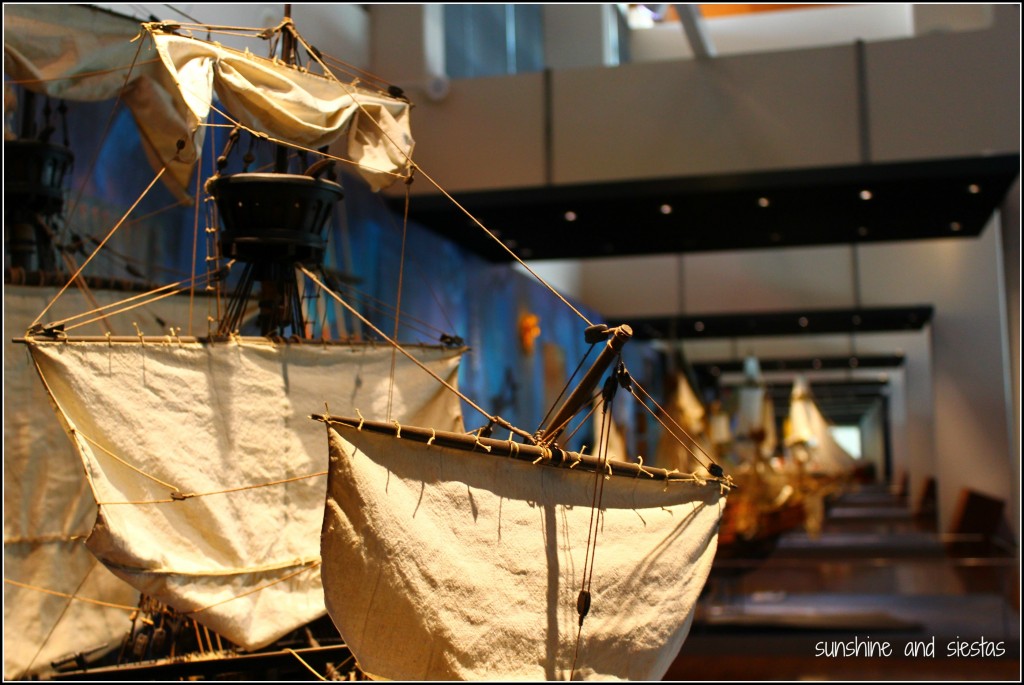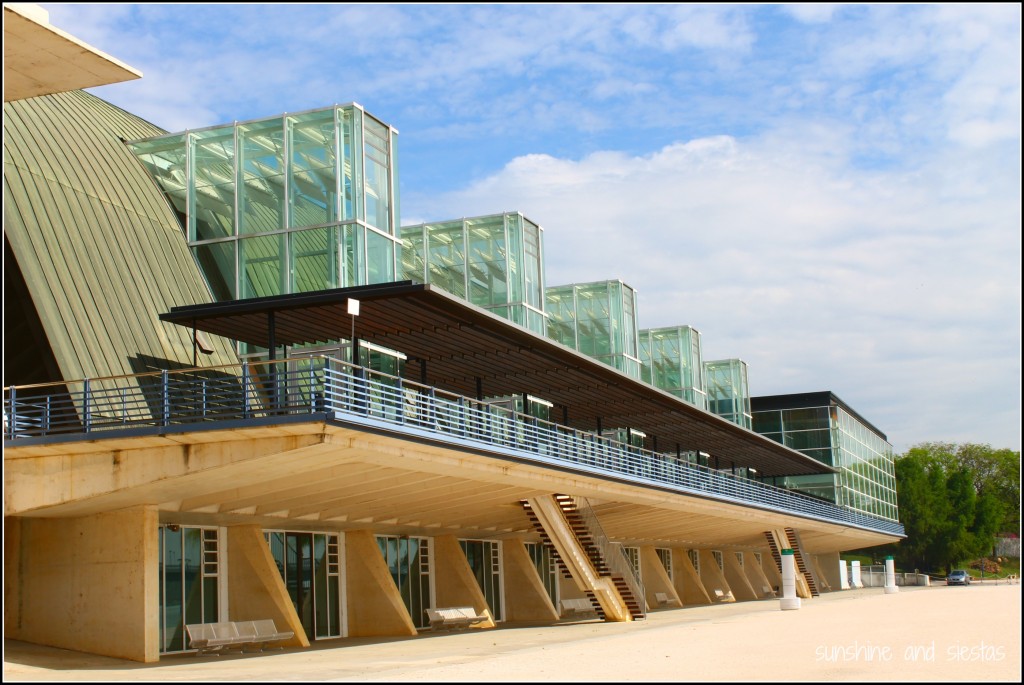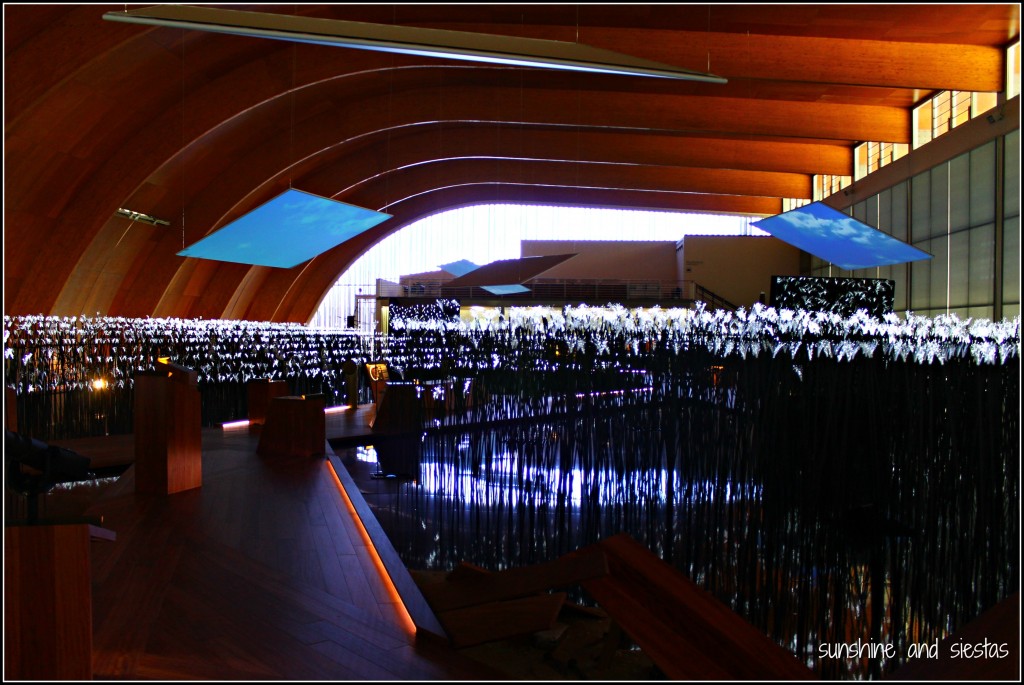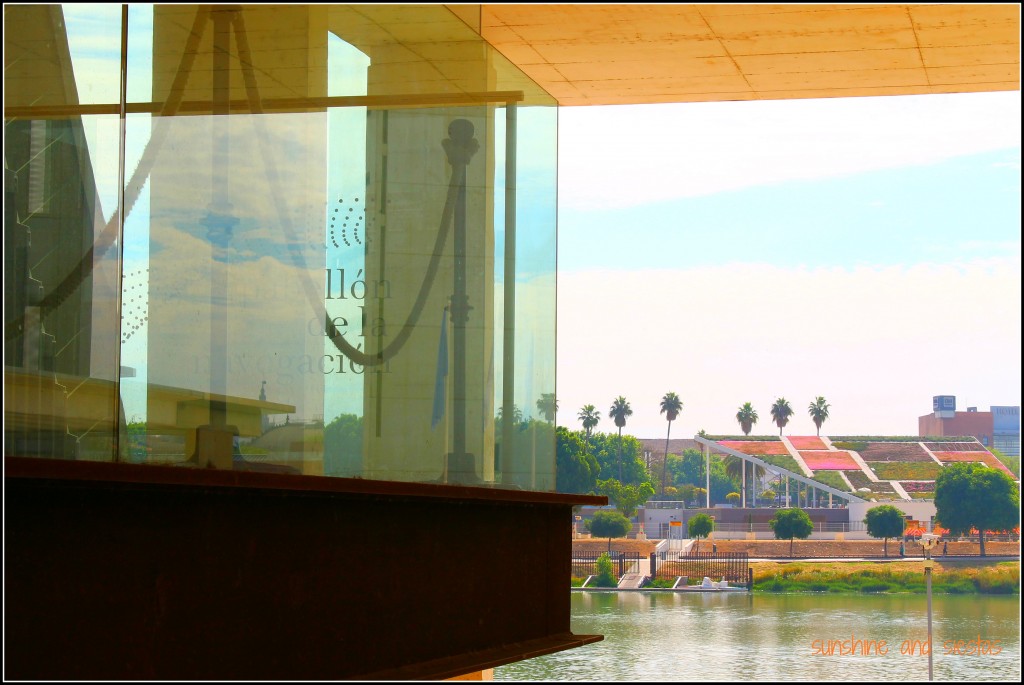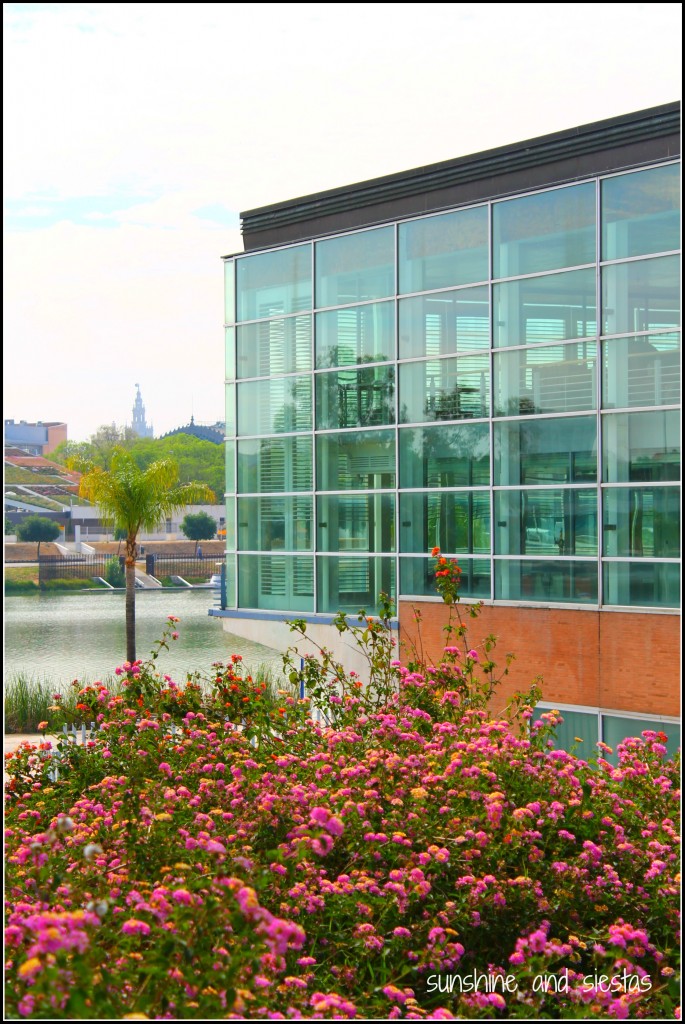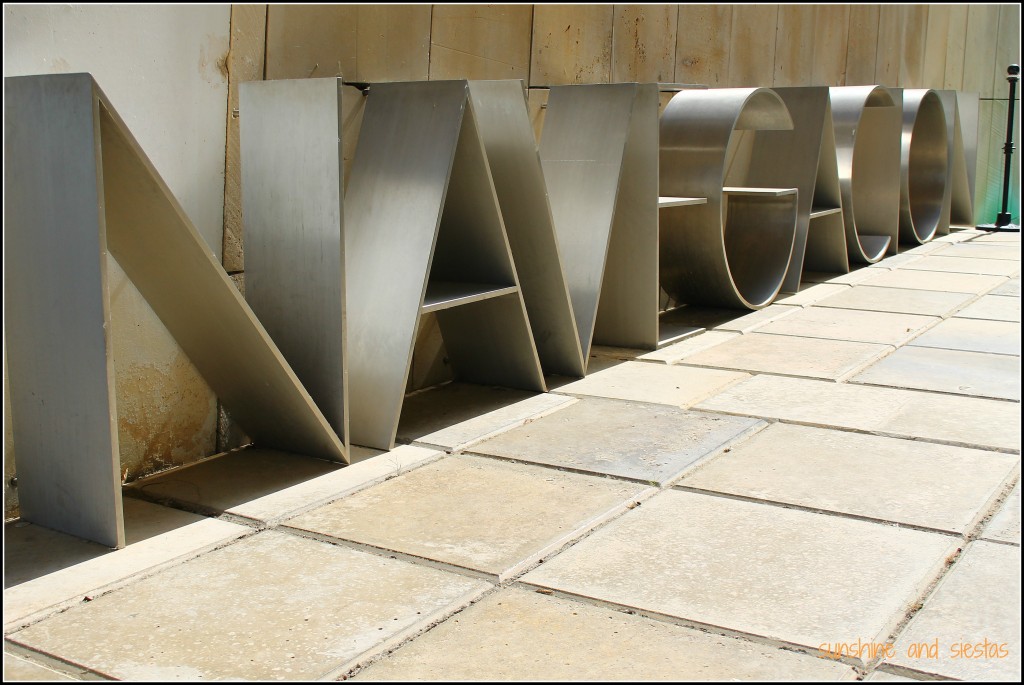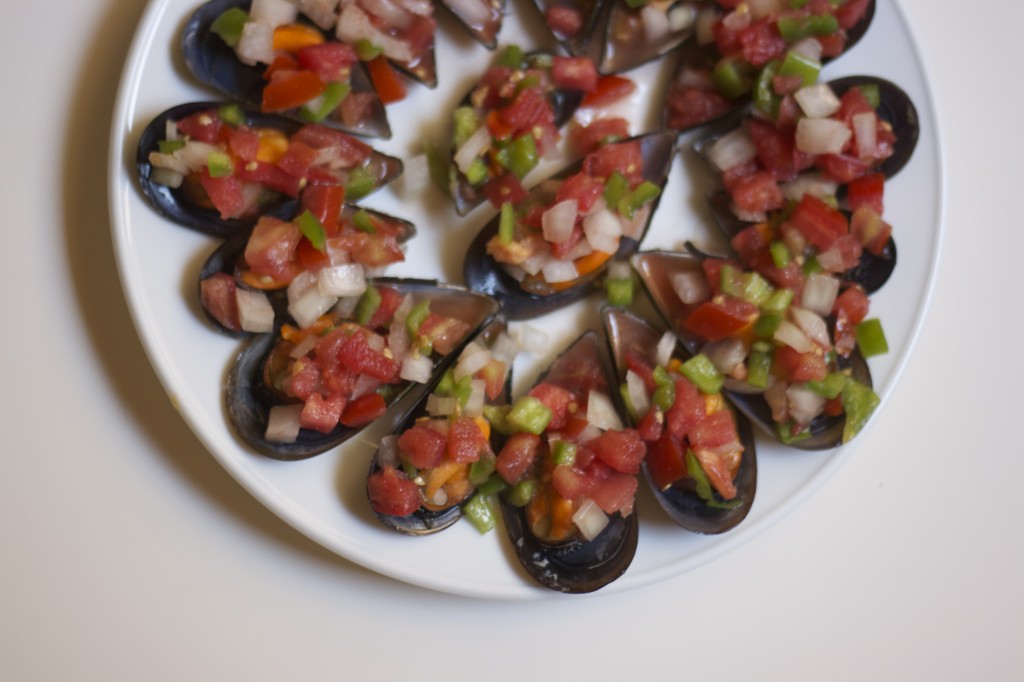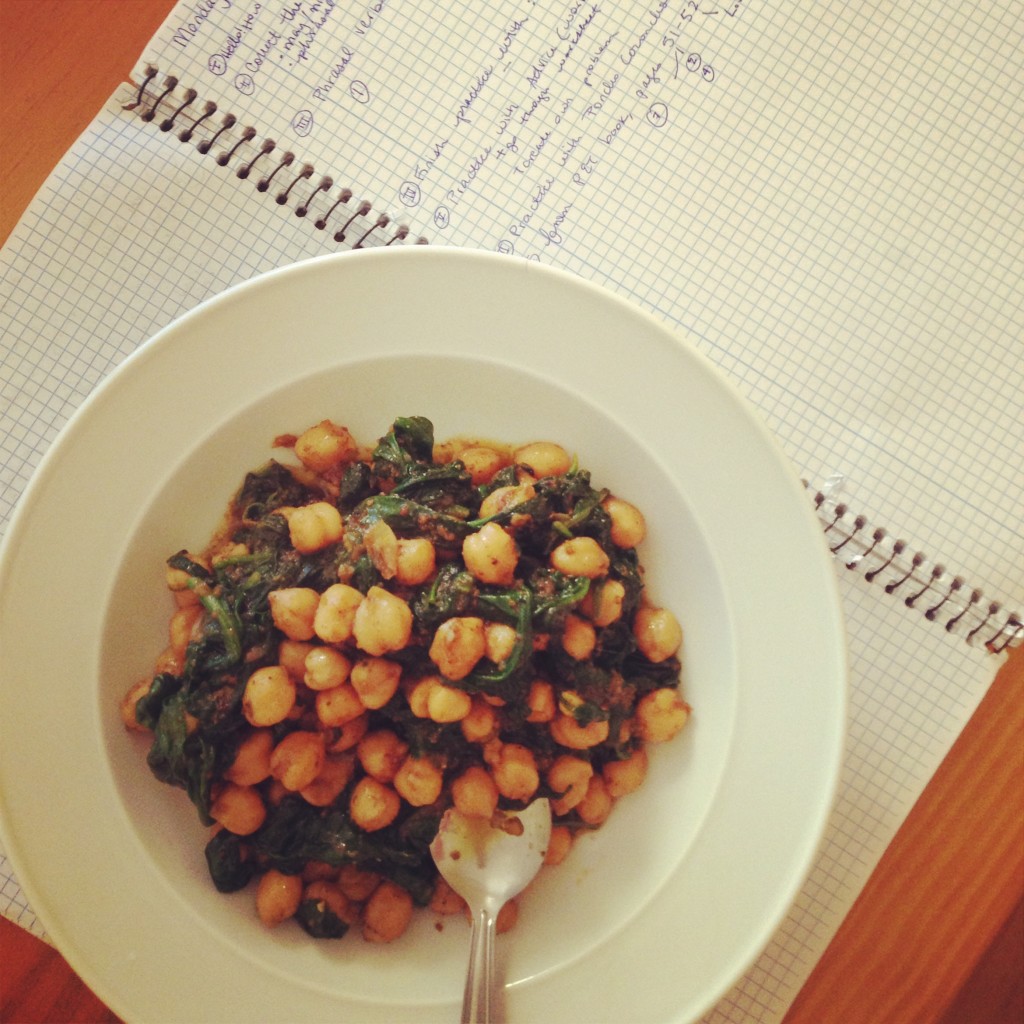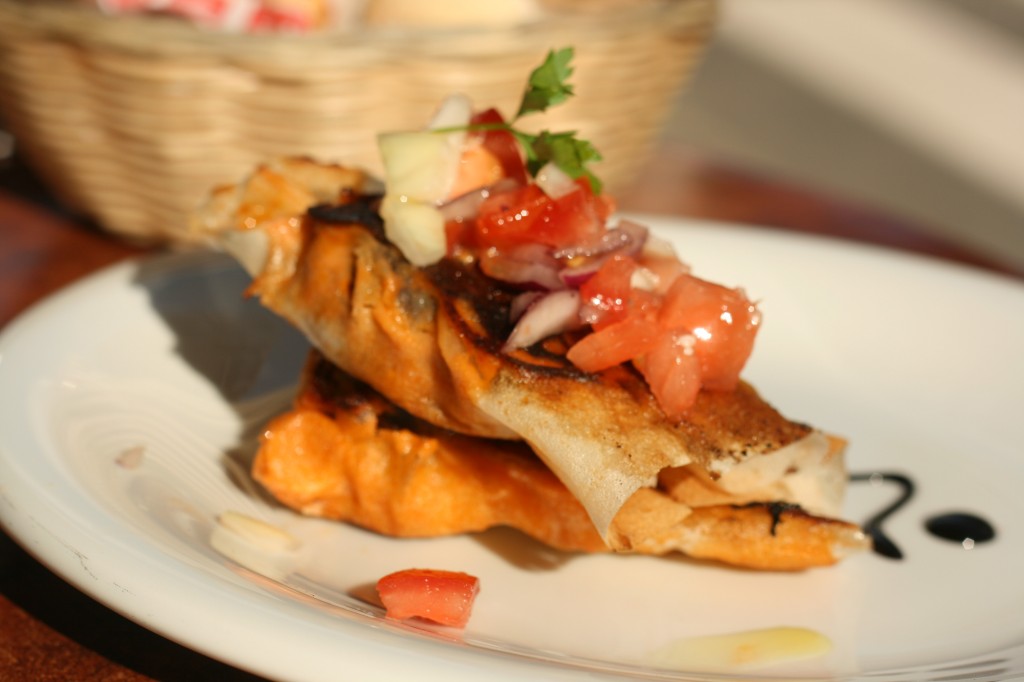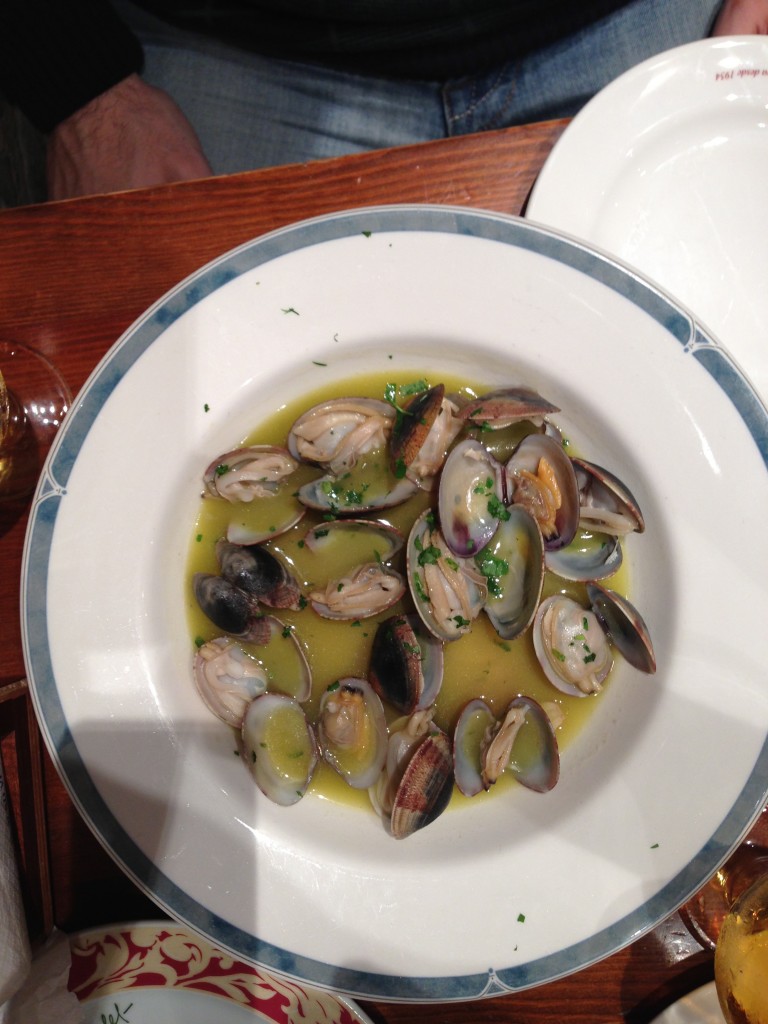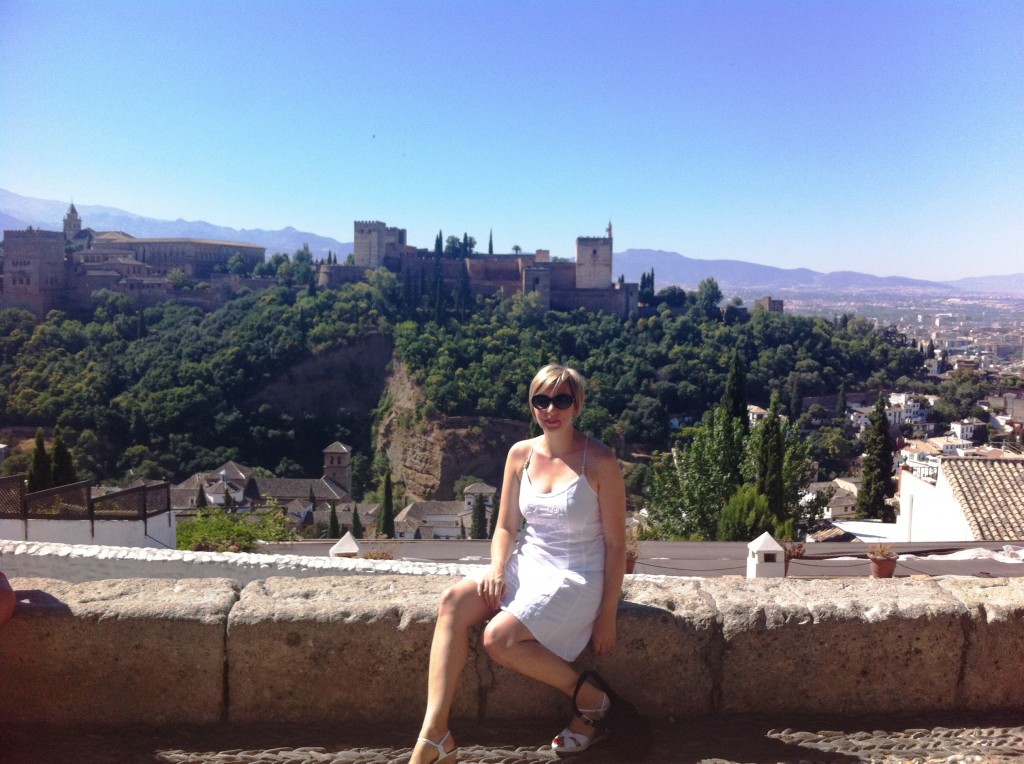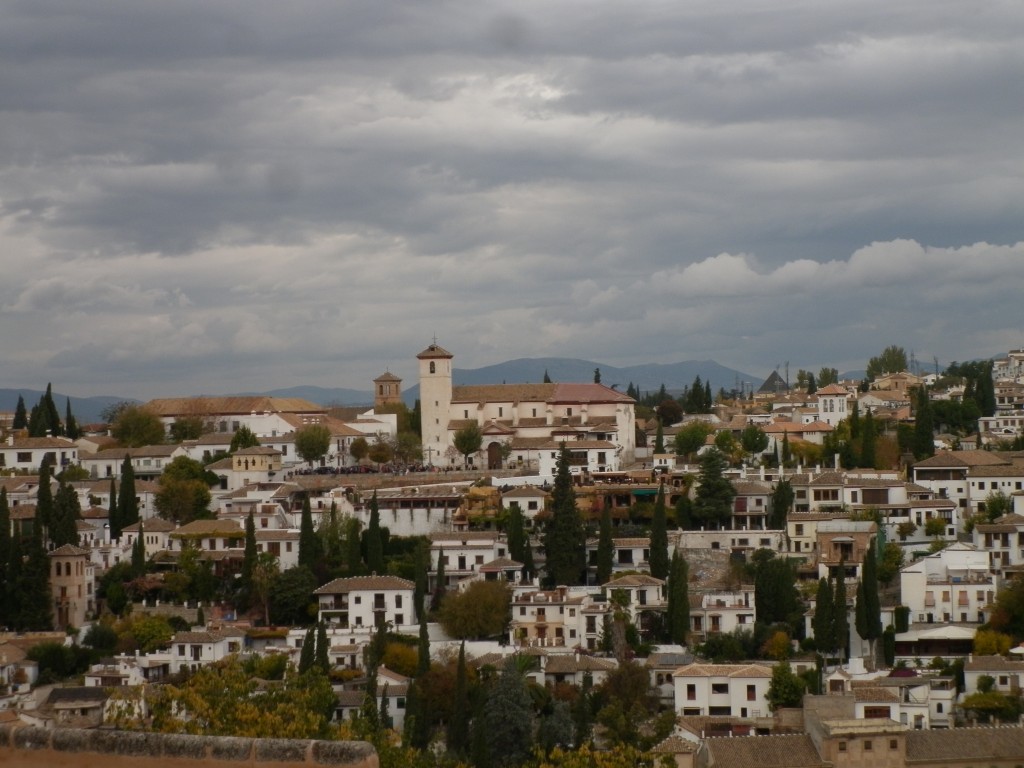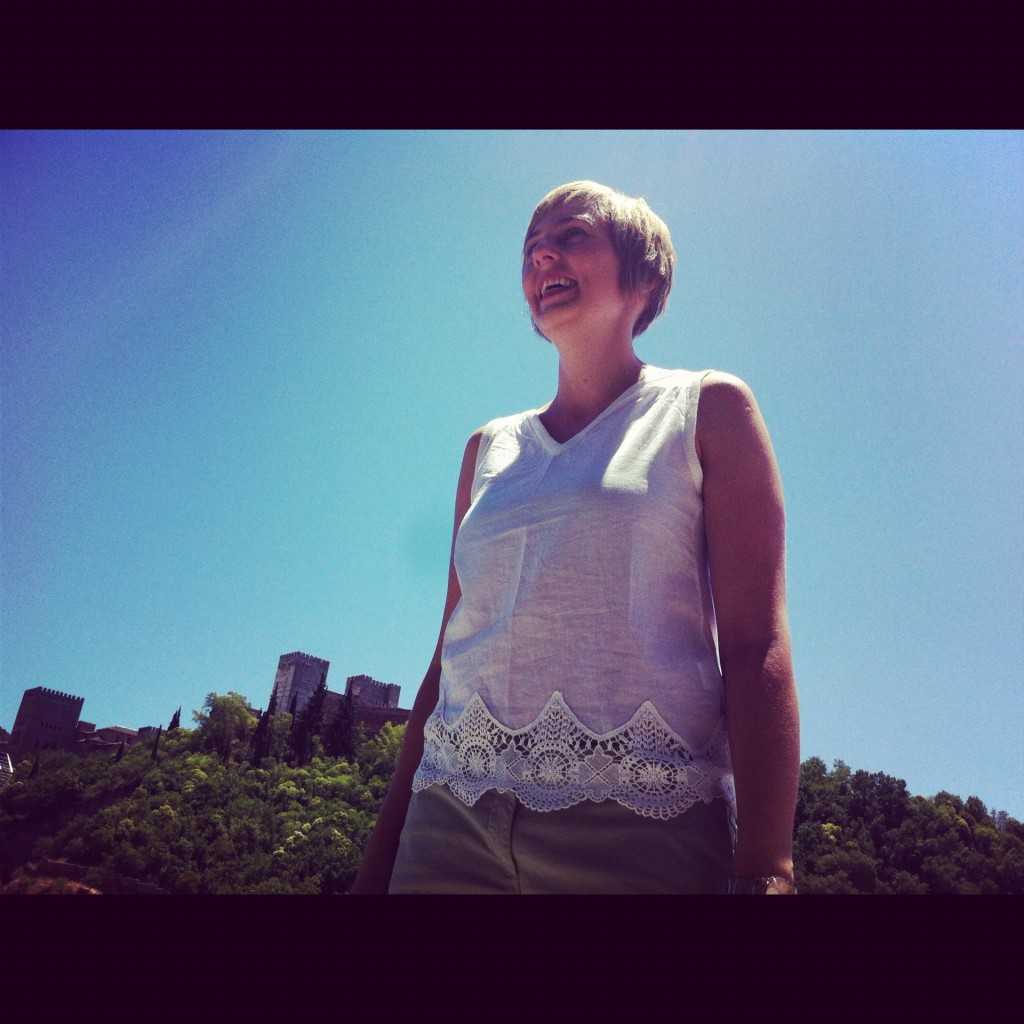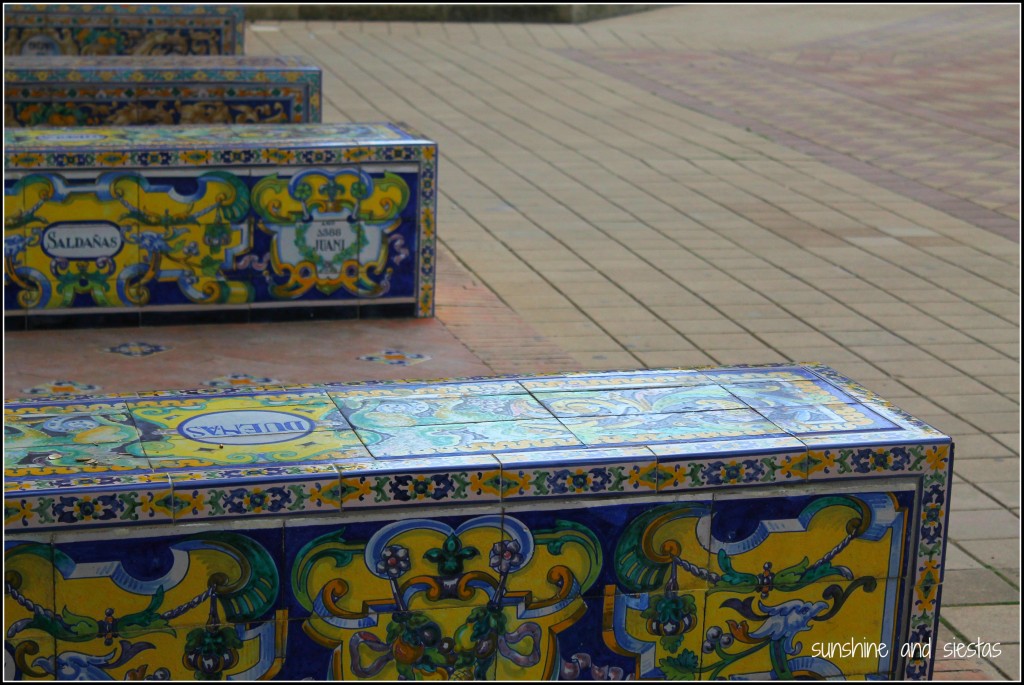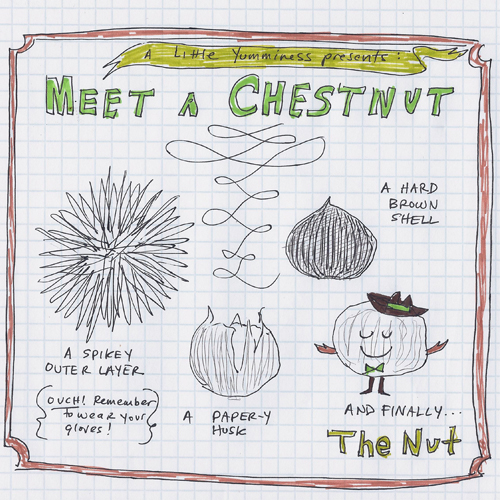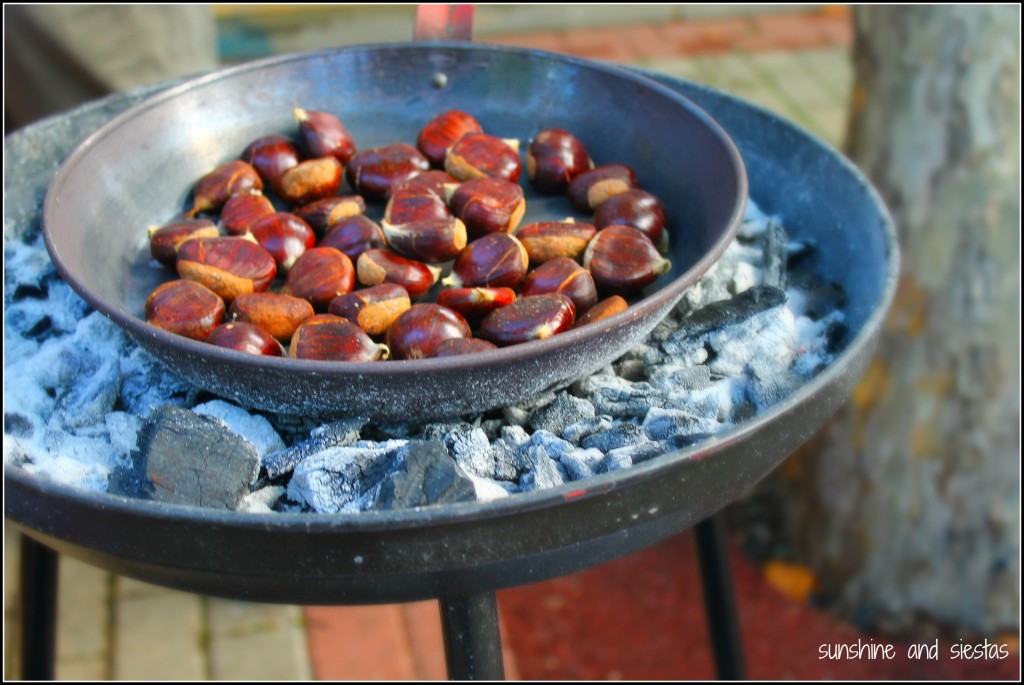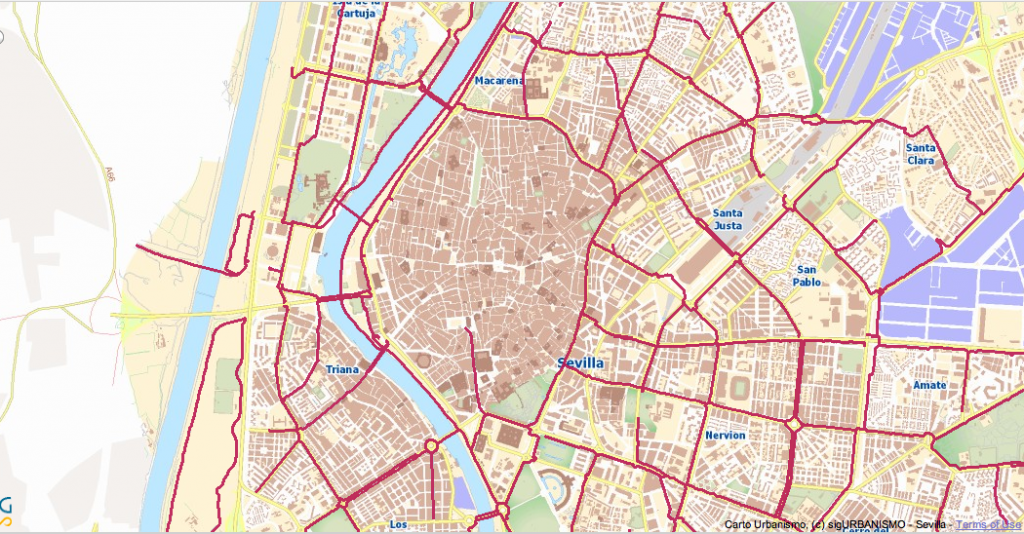Seville’s history is intertwined with the sea, despite being inland. It was here that The Catholic Kings gave Christopher Columbus permission and a couple of big boats to go find the East, and subsequently, all of the riches from the New World came through Seville on the Guadalquivir River.
During the Ibero-American Festival of 1992, the land around the Cartuja monastery was transformed into a futuristic city, where technology merged with tradition. Sadly, the city left this corner of Seville untouched for a few decades, and is now beginning to sell buildings to be recycled and re-used – and hopefully revitalize La Cartuja.
Perched on the banks of the Guadalquivir on the southern end of the complex (just opposite the Schindler elevator erected for the Expo’92), the building resembles a capsized boat, whose hull soars over you. The space hosts rotating exhibitions, as well as a permanent exhibit about Seville’s place in maritime history and what it was like to sail the seven seas. Opened in 2011, it’s a beautiful, open space, and worth a quick visit if you’re in Seville. There are plans in motion to open a small bar and offer boat rides on the river, too.
If you go: the Pabellón de la Navegación can be reached by city buses C1 or C2, or the 6, and is a 15 minute walk from Plaza de Armas. Visiting hours are, Tuesday-Saturday from 10am – 17:30 and Sundays and holidays from 10am – 15:00.
